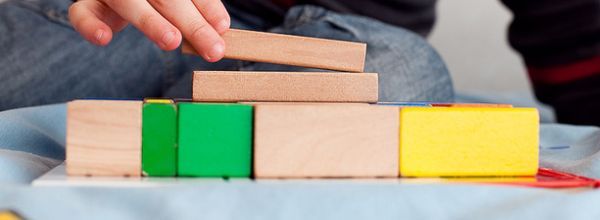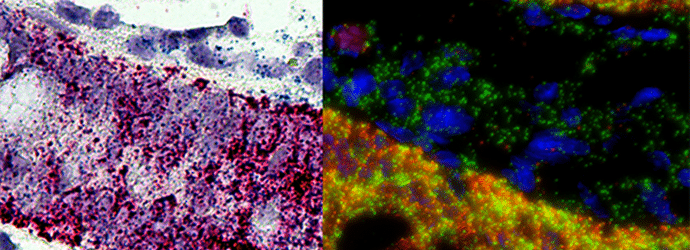Bitesize Bio has had a lot to say about RNA isolation, mainly because it is one of the most anxiety-producing requirements for molecular biology; especially when you are first starting out (although isolating proteins from complex samples like soil and stool is far more difficult, let me tell you. But that’s a future post.) We’ve discussed how to work RNase-free, how to troubleshoot your preps, how to check the purity of your RNA preps and 5 ways to really screw things up (in case you weren’t sure).
Well, recently we were asked about isolating RNA from a very specific tissue type that has its own little quirks and special needs. Today we are going to talk about tissue samples that have high levels of glycogen content: liver and skeletal muscle.
Looking at Liver
We all know the basics of DNA precipitation. And we also know that if the DNA or RNA concentration is very low, an option is to add glycogen. Glycogen is a polysaccharide that is insoluble in ethanol and when added to DNA or RNA, will trap the nucleic acids as it precipitates and allow for a more visible pellet. This is great if your RNA is already purified but what about in a homogenized tissue like liver, which is so rich in RNA, you could practically sneeze in it and still get great RNA? (OK, don’t really try that in the lab unless you want some of your own RNA included in the prep.)
Rather than being helpful, the glycogen content in tissue samples can interfere with silica column based purification. Basically, in a tissue preparation, you have tons of RNA, high guanidine salts, and then what do you do before binding the RNA or DNA to the column? Correct- add ethanol. Normally this dehydrated mix promotes binding of nucleic acids to the silica matrix while the proteins and salts pass through. Add a heap of glycogen though, and now you have immediate precipitation of nucleic acids. In RNA liver preparations you can actually observe a pellet coming through the column and forming at the bottom of the collection tube. Even though the spin is only one minute at full speed (and not the requisite 10-20 minutes we’re used to doing), the glycogen makes everything heavy and your RNA goes straight through and pellets out.
Fortunately, some very detail-oriented and hyper observant scientists noticed this phenomenon and correlated it with low RNA yields and talked about it (or should I say, complained). It was realized that maybe something is different about liver. The solution? Change the concentration of ethanol used to 50% (25% final concentration) and this is enough to keep the nucleic acids from completely precipitating out so they can be purified on silica.
Mastering Muscle Tissue
Muscle tissue is another sample type that has a lot of glycogen. But because muscle samples are so difficult to extract and generally give lower yields of RNA, the problem was not as obvious as it was for RNA preparations from liver. Recently a reader contacted Bitesize Bio to ask about this very issue and she confirmed that switching to a final concentration of 25% ethanol at binding is the remedy for muscle as well.
But muscle tissue has its own additional problems that the other tissues do not have. And that is the fibrous nature of the tissue. Skeletal muscle, cartilage, heart tissue- these are very tough, strong, resilient tissue types, and good thing for us! But if you have to extract RNA from them, you’re not quite as thankful.
The best approach to getting the maximal RNA out of muscle and fibrous tissues is to add a proteinase K (pro K) digest. This needs to be done at a lower guanidine concentration than used for binding to a silica column, but the tissue still needs the protection from RNases afforded by high concentrations of guanidine. So the solution is to dilute.
The Protocol
A basic protocol requires homogenizing tissue in the high guanidine lysis buffer containing beta-mercaptoethanol, followed by diluting the sample with RNase-free water and adding pro K. For example, homogenize 15-25 mg of starting tissue in 300 ul of guanidine buffer with BME, dilute with 600 ul of water and add 10 ul of proteinase K. Heat at 55C for 15 minutes. Add 0.5 volumes (450 ul) of 100% ethanol and load the column as many times as you need. If working with skeletal muscle, we have independent confirmation that less ethanol works better, so try adding 300 ul of 100% ethanol (final concentration 25%) and see how that works.
If you find this protocol needs to be tweaked, you can adjust several things.
For max RNA yield, you may need to try some different incubation times, say between 10-30 minutes depending on how well homogenized the sample is and how much you started with. If you are fearful that high temperatures will cause degradation of your RNA, you can lower the incubation temperature to 45C-55C. However, in my previous life we would routinely heat FFPE tissues with pro K for RNA isolation at 60C for 30 minutes without a problem (and without BME!).
You can also play around with the guanidine concentration to increase pro K activity. If the guanidine concentration is too high, then the pro K activity will be reduced. To increase pro K activity, you can try reducing the guanidine concentration further and then add more of the high guanidine binding solution back in at the end.
Finally, adjust your ethanol concentration as needed. For cartilage or heart tissue, go with the normal 33% final concentration (adding 0.5 volumes of 100% ethanol) but for skeletal muscle, which contains glycogen, try reducing it to 25%.
I know this sounds like a lot of tinkering around with your precious samples. But for all you liver, heart, and skeletal muscle scientists looking for help, we hope this gets you past the RNA isolation step and on to the exciting stuff. Not that RNA isolation isn’t exciting. Or troubleshooting constantly. We all know how wonderful that is!
Many thanks and please let us know your feedback and helpful tips if you have any.





